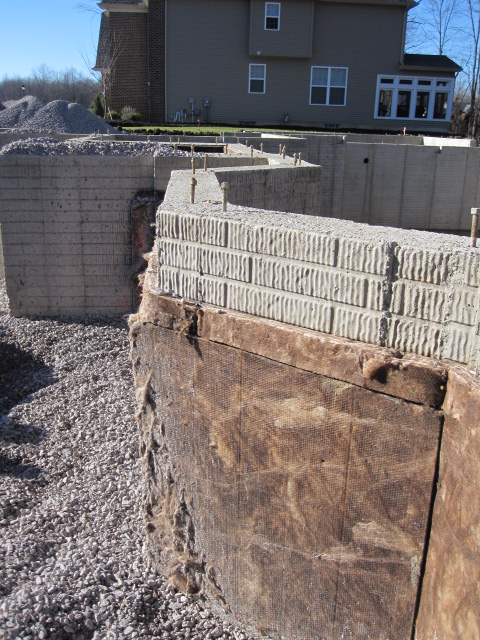Foundation Waterproofing
0 Comments | Posted by armchairbuilder in Build Your Own Home, Owner-Builder
How to Build a Home, Step 27
Waterproofing your basement foundation properly is critical to keeping your home’s lower level dry. When done correctly, this waterproofing material will provide a tight seal to keep pesky groundwater out of your basement space for years to come. Here we share with you some options for sealing up the outside of the foundation wall and we also cover best practices for the application.
.
Dampproofing Vs. Waterproofing
Building codes give us the minimum requirements for building. What this means is…in most cases, you will want to exceed the code to build a high quality home. When it comes to sealing up your basement foundation to keep water out, it’s a good idea to exceed the typical building code requirements. According to the 2012 International Residential Code For One and Two-Family Dwellings, the minimum requirement for sealing up the outside of the basement wall is to apply a bituminous coating. There’s no mention of thickness or specifications for this coating. This bituminous coating is commonly referred to as dampproofing.
So for those of you that are thinking of finishing your basement or storing expensive items down there, you may want to consider a waterproofing material instead. A waterproofing membrane is a thicker coating that is typically more pliable than dampproofing. This allows the material to span cracks that inevitably occur in the foundation wall. Whereas the dampproofing will break when a crack occurs, the waterproofing membrane will stay in tact with gaps up to 1/8 inches, keeping the groundwater out of your basement.
Waterproofing is made by several different manufacturers under a bunch of different brand names. You will want to carefully review the soil conditions to determine which material is best for your situation.
Application
Most basement foundation waterproofing materials are either sprayed or rolled onto the outside of the wall. Some waterproofing systems have a two part system. The most effective systems apply a product to the top of the waterproofing. The picture above has what is referred to as an insulation board. Not only does the material insulate the wall, but it also provides drainage and protection from sharp objects. A sharp rock in the backfill material has the potential to penetrate the waterproofing and create a leak. But the insulation board provides a layer of protection to prevent this from happening.
Best Practices for Installing Foundation Waterproofing
As with any building activity, the foundation waterproofing application has some best practices you should be aware of. Either you or your builder consultant will want to watch this activity carefully as it can make or break your basement space. Here are some builder tips for checking the quality…
- Dry – The wall and footing should be dry before application. So check the weather to make certain rain is not in the forecast. If there is water in the hole, you will want to remove it. Check out this article for tips to deal with high water tables issues.
- Clean – Make sure the wall and footing are clean. You don’t want dirt or mud to keep the waterproofing from sticking to the wall. A dirty wall can lead to leaks in your basement.
- Grade Line – Be sure to give your waterproofing company a copy of the engineered plot plan. This will allow them to apply the material to the correct height on the foundation wall. You may even want to mark this line (with spray paint) so they know exactly where you want the material to stop. This will prevent the above grade portion of the wall from getting an ugly coating.
- Thickness – Check the whole foundation to make sure there are no thin or missed spots.
- All Basement Walls – All basement foundation walls should be coated…even those underneath the garage. Ground water comes up from below, so even though the garage is covered and no rain water will land there, it’s still important to coat the basement/garage walls.
- Footing Joint – Make sure the joint between the footing and the foundation wall has a thick coating on it. Remember, the footing and the foundation wall are typically poured at two different times so a joint is created between them. This seam is susceptible to water infiltration…so make sure it is sealed up tight.
Properly installed foundation waterproofing is a key element to any dry basement. Stay tuned for our next article on foundation drainage system installation. Are you thinking of building or remodeling? Be sure to stop by our ESTORE to see some of the great products we have to help you manage the project yourself.


